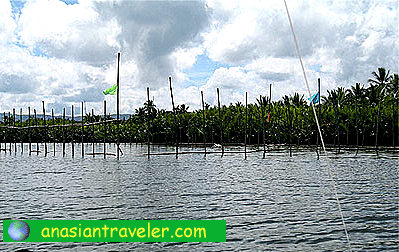BASAY, SAMAR
SHARE THIS ARTICLE:It is practically near Tacloban City, the commercial and industrial center of Region VIII, which was once a daughter barrio of Basey. The two municipalities are linked through the famous San Juanico Bridge.
Getting there:
From the Tacloban terminal or "paradahan" in local term, there are mini buses and jeepneys (P15) and a non air-con FX car (P20) going to Basay for a 30 to 45-minute drive. (Fare as of 2007)

Basay is known for its handmade "Banig" (Mats) made of "tikog". Basay's climate is generally cool and invigorating emanating from the mountains and forest area. It is visible almost the year round. Natural resources include rice, coconut, banana, rootcrops and vegetables.
They have the Kawayan-Banigan Festival Parade where Basay's favorite local products bamboo and mat weaving is highlighted. The regular festival is celebrated yearly on the 28th of September.
Visitor can observe the mat weaving of the locals and shop for woven handicrafts like mats, baskets, bags, wallets and slippers. Banig is a handwoven mat usually used for sleeping.
Walking or renting a bike is the best and cheapest way to get around the town. You can visit the 17th century old church also known as St. Michael the Archangel Church, one of the tourist attraction in the area. This church was built during the Spanish era and it is located on top of a hill.
St. Michael the Archangel Church
inside the church

It is said that the church was a place for public meetings and stage plays during the Japanese occupation and a place for refuge during the liberation. The church features a watch tower and there are images of saints painted on the ceiling inside near the altar.
Life in Basay is pretty laid back and quiet. Shopping malls, restaurants, deluxe accommodations and nightlife to general public is practically nonexistent. The town has carenderias (small eatery) and one lodging house named 'Celbalor'.

 SHARE THIS!
SHARE THIS! 























0 comments